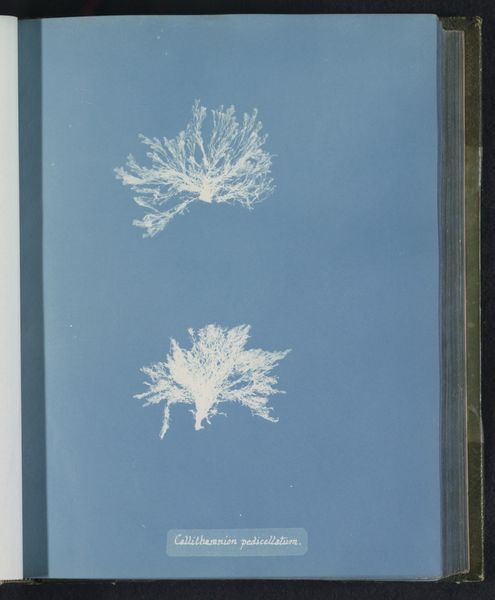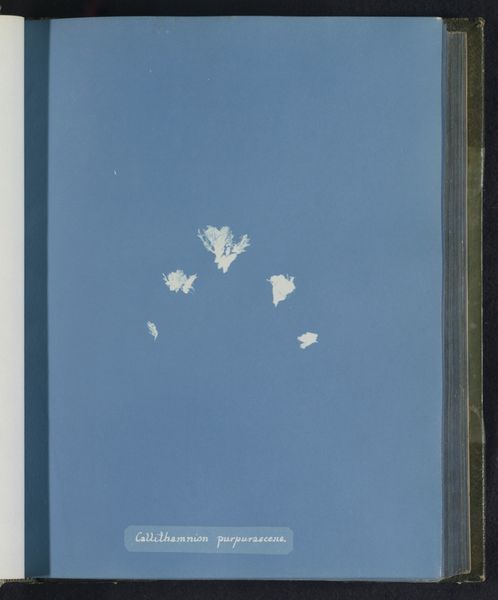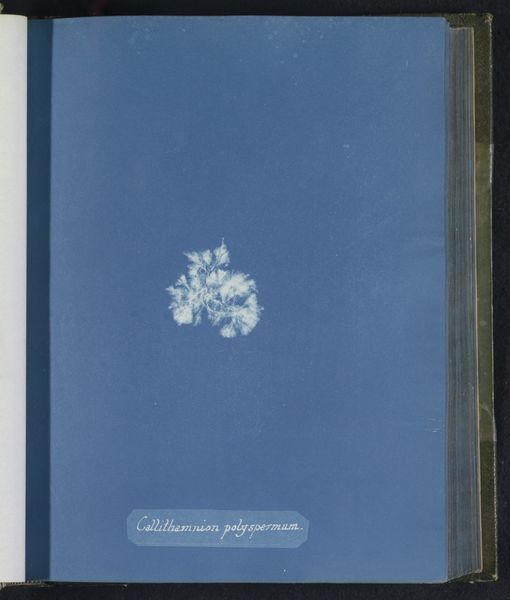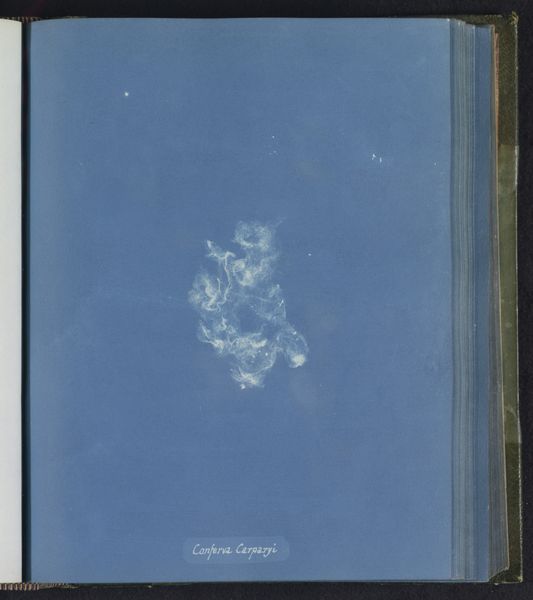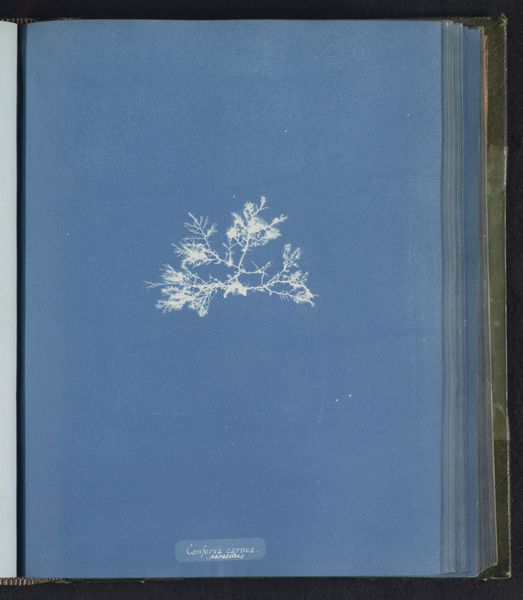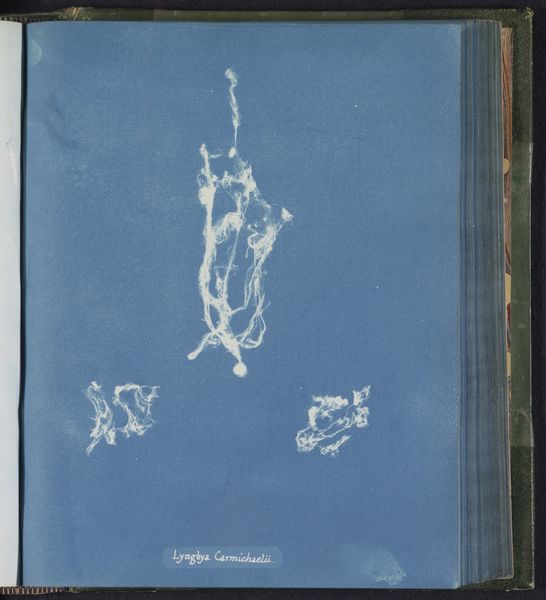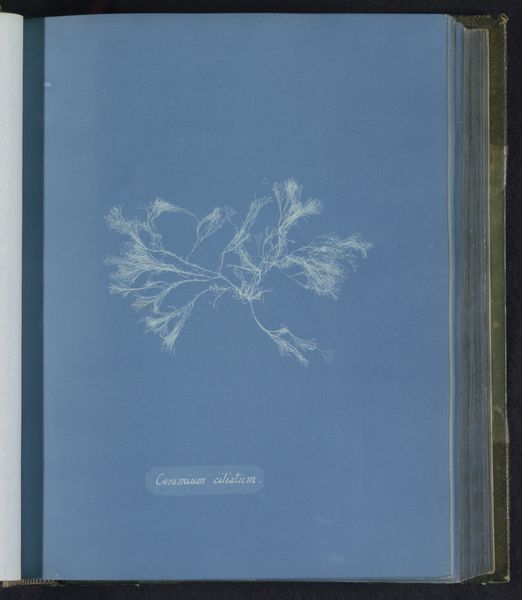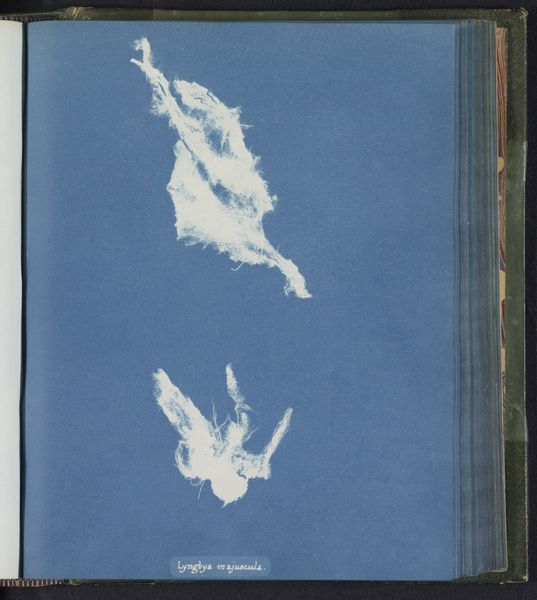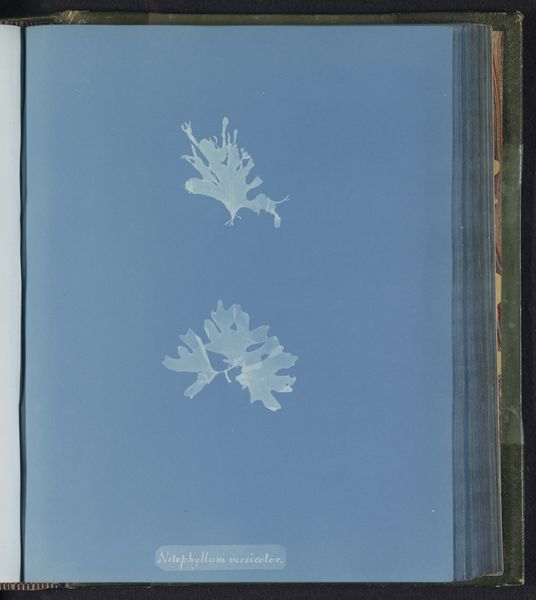
print, paper, cyanotype, photography
#
aged paper
#
still-life-photography
# print
#
personal journal design
#
paper
#
cyanotype
#
photography
#
personal sketchbook
#
book mockup
#
publication mockup
Dimensions: height 250 mm, width 200 mm
Copyright: Rijks Museum: Open Domain
Curator: This image, titled "Callithamnion spongiosum," is a cyanotype made by Anna Atkins, dating roughly from 1843 to 1853. Editor: My first thought? Dreamy. It looks like a couple of ghosts dancing on a pale blue sky. The stark white against that monochrome background creates a really ethereal quality. Curator: Precisely. Atkins' innovative use of the cyanotype process, a very early photographic technique yielding a distinctive Prussian blue print, allows us to study this seaweed specimen with remarkable detail and clarity. Note the delicate, almost skeletal structure revealed by the exposure to light and chemicals. Editor: And isn’t there a poetic contrast between the scientific precision and the utter simplicity of it all? It's like a haiku, distilling nature down to its barest essence. I feel a touch of melancholy too, perhaps because of the age of the print. It's a whisper from the Victorian era, you know? Curator: Indeed. The monochromatic palette directs our focus solely to form and texture, allowing us to analyse its compositional elements—the negative space, the contrast between organic forms and the geometry of the paper itself. Atkins used the very act of creating art as a tool for cataloging, classifying, and ultimately, for understanding the natural world around her. Editor: Absolutely. It's art as science, science as art—and so, so haunting. It really gets you pondering the relationship between documentation and interpretation, doesn't it? Curator: Quite. And the way the artwork presents itself in a book form adds a layer of narrativity as well. "Callithamnion spongiosum" is more than a botanical study; it’s a testament to the power of observation and the enduring appeal of the cyanotype as an art form. Editor: Thinking about it, it reminds me of collecting shells at the beach as a kid—holding a small piece of a larger, more complex world in your hands. And it sparks an excitement of discovering things never seen before. Curator: Indeed, it showcases the way early photographic techniques like this help us reinterpret scientific documentations with a modern perspective. Editor: Yes! Seeing how far we've come and how art helps capture these initial moments for us, what a fantastic reflection to walk away with!
Comments
No comments
Be the first to comment and join the conversation on the ultimate creative platform.
